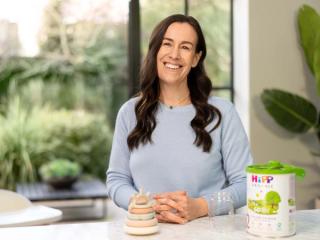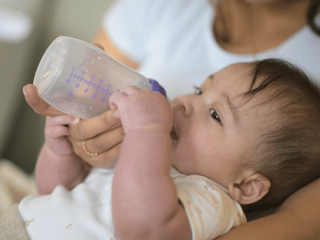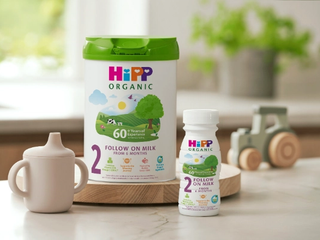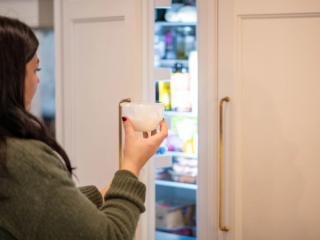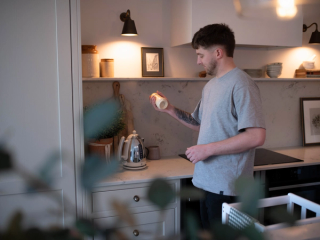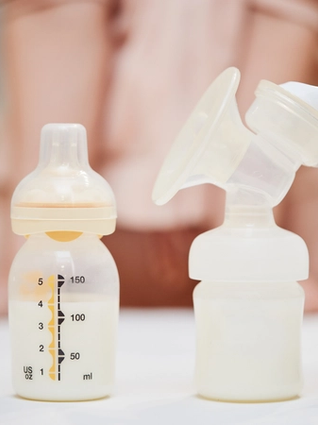
- Home
- Advice Hub
- Baby
- Baby Feeding
- Combination Feeding
Combination Feeding
Thinking about combination feeding? Learn how to balance breastfeeding with expressed milk or formula, making feeding work for you and your baby’s needs.
What is combination feeding?
Why do some parents combine breast and bottle-feeding?
Combination feeding schedule
Best bottles for combination feeding: what to look for
Establishing a combination feeding routine
How to schedule for different stages of baby
Common challenges in combination feeding
How much formula is enough?
There is no question breastfeeding is the best way to feed your baby, however there are some instances where parents may choose a bottle of expressed breastmilk or formula in combination with breastfeeding.
What is combination feeding?
Combination feeding is when your feeding is made up of both breastfeeding and bottle feeding. Some parents choose to express breast milk into a bottle and feed a baby from the bottle rather than the breast. Some parents choose to replace some breastfeeds with formula feeds.
Why do some parents combine breast and bottle-feeding?
There are many reasons we may consider combining breast and bottle feeding.
- Due to your circumstances there may be times you need someone else to feed your breastfeeding baby
- You may want to share feeding routines with a partner
- You might prefer to give expressed breastmilk from a bottle
- You may have difficulties breastfeeding exclusively and have been advised by a healthcare professional to add formula to your feeding schedule
If you are struggling to decide how to feed your baby or finding breastfeeding difficult, always reach out to support from your healthcare provider and discuss this with them. After you have a baby there are always lots of professionals on hand who want to help.
Combination feeding schedule
How to start combination feeding
It is recommended that you wait for your breastfeeding to be established before you start to combine feed. This looks different for everyone but is usually around 4-6 weeks. If you have any worries or concerns about feeding your baby and changing the way you are feeding it is always best to speak to your healthcare professional. They are there to help with these questions.
Combination feeding with expressed breastmilk
If you are choosing to combine feed with expressed breastmilk you will need to pump the milk. You may find there are different times of the day you have more success with expressing milk because of changes in hormone levels. You can try different routines and find the best time which works for you. Always ensure you express from both breasts, to reduce the risk of one becoming engorged.
Remember milk is produced on a supply and demand basis, this means the more you ask your body to make the more it will produce. If you are pumping a lot, you may feel your milk supply has increased too much, don’t worry this will settle over time.
How to combine breastfeeding and formula feeding
You may choose to introduce formula to your combination feeding schedule. If you decide to do this it is best to make the change gradually as this will give your breasts time to adjust to the changes in supply. If you are concerned about a reduction in milk supply, you can still express during the times your baby takes a bottle of formula. If you are choosing to add formula in because you have an upcoming return to work date, it is sensible to start to make the change a few weeks before.
If you are using powdered formula as opposed to premade formula, it’s important that the correct steps are followed to ensure the milk remains safe to feed your baby. When formula is left too long, bacteria can develop potentially making your little one unwell.
Best bottles for combination feeding: what to look for
Choosing the best bottles for combination feeding can be overwhelming as there are lots of products to choose from, always ensure to look out for a bottle which reduces the risk of symptoms of colic as using a bottle can increase the amount of air a baby is taking in during a feeding. It is also sensible to choose a bottle which can be taken apart and sterilised effectively in between feeds, this will prevent harmful bacteria forming on the bottle. When transitioning a baby from the breast to a bottle the sudden change in milk flow can increase difficulty in feeding, choosing a bottle which enables you to choose a slow flow teat can help with this.
Feeding a baby from a bottle is different to feeding a baby from the breast. Your baby may find this new experience difficult to grasp and take a preference over one or the other. Trying different positions which work best for your baby can help them and you navigate this new experience.
Establishing a combination feeding routine
Getting started on your combination feeding routine might feel daunting at first and you might be wondering how to get started. Always remember every baby is different and implementing any change is best done gradually. You could begin with one bottle a day, at a time which suits you. Ensure you monitor your baby’s feeding cues and use these to gauge what your baby needs and when.
Tips
- Choose a good feeding time, it can be good to introduce a bottle when baby is relaxed
- Use a slow flow teat to help with the transition from breast to bottle
- Express regularly to keep up your milk supply
- Use a pace feeding approach by allowing your baby lots of breaks throughout feeding, like they would at the breast
- Ensure lots of skin to skin and eye contact
How to schedule for different stages of baby
Every baby is slightly different in terms of how much formula they will need alongside breastfeeding. Deciding on a schedule will depend on how much breast milk you are already offering. Always look at the guidelines on how much formula to give during a feed. If you are unsure, reach out to your healthcare provider, they will be more than happy to help. It is important to consider babies have lots of growth spurts in the first year and this will mean phases of having a bigger appetite.
Babies also do not always feed because they are hungry, sometimes they will breastfeed for comforting reasons. Learning to understand your babies' feeding cues and their needs will help you understand how much formula you should give alongside your breastfeeding. If you have any concerns always contact a healthcare professional to discuss this.
Common challenges in combination feeding
Navigating a new way of feeding your baby can feel overwhelming and there will almost certainly be some challenges along the way. Getting as much knowledge and information as possible from a healthcare professional will help you feel confident in the steps you are taking to feed your baby.
How to Maintain Milk Supply When Combination Feeding
Breast milk is produced on a supply and demand basis, so replacing feeds with formula or missing feeds may have an impact on your milk supply. To help maintain supply, try to feed on demand as much as possible and pump regularly between feeds to stimulate your milk production. Staying well-hydrated, eating a nourishing diet, and engaging in skin-to-skin contact with your baby will also help maintain milk production.
Managing Emotions During Combination Feeding
Feeding can be an emotive subject for new parents, and it’s important not to feel embarrassed or worried about discussing your feeding choices. Every family’s journey is unique, and how you feed your baby will be a very personal decision which should always be based on what works best for both you and your little one. If you feel overwhelmed or unsure, try to seek support from trusted sources, such as midwives, lactation consultants, or parenting groups, who can provide reassurance and guidance.
How much formula is enough?
The amount of formula your baby needs will depend on how much breast milk they are receiving. Aim to satisfy your baby’s hunger while maintaining your milk supply by breastfeeding or offering expressed milk regularly. As your baby grows, their nutritional needs will evolve, so the amount of milk required may vary over time.
Motherhood is a journey of navigating what is right for you and your baby. Every baby and family is different and we all need or want slightly different routines for our feeding, which is perfectly okay. Combination feeding is a flexible approach which allows you to balance breastfeeding and bottle feeding in a way that suits your lifestyle and circumstances. Your emotional well-being is just as important as your baby’s nourishment—be kind to yourself and focus on what makes you and your baby happy and healthy.
Knowledge is power, becoming well informed about what your feeding options are is really important so you feel empowered and confident in the decisions you make. Midwives and healthcare professionals will be well equipped to discuss all your feeding options and help you find a routine which works for you.
Important Notice
We recognise that breastfeeding is best, providing many benefits to both mothers and infants. We also recognise that every parenting journey is unique, and we are here to support you through this journey, however you choose to feed your baby.
If you choose to breastfeed it is important that you eat a healthy well-balanced diet in preparation for and during breastfeeding. Before deciding to combination or formula feed your baby, note that reducing or stopping breastfeeding can be difficult to reverse. Babies feed on demand, so replacing breastfeeding with infant formula milk may reduce your supply. Formula feeding has both social and financial implications. Talk to your midwife or health visitor for guidance and support.
If you choose to use formula milk, make sure you choose the right milk for your baby’s age and prepare and store it according to the instructions on the packaging. Not doing so may make your baby ill. Infant formula is a nutritionally complete breastmilk substitute that can be used from birth. From 6 months you can choose to use follow on milk as part of a mixed diet and from 12 months you have the option to move onto growing up milk alongside a balanced diet.
